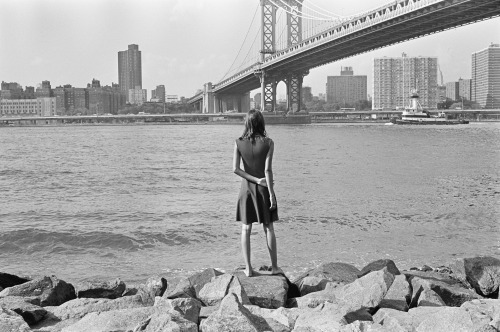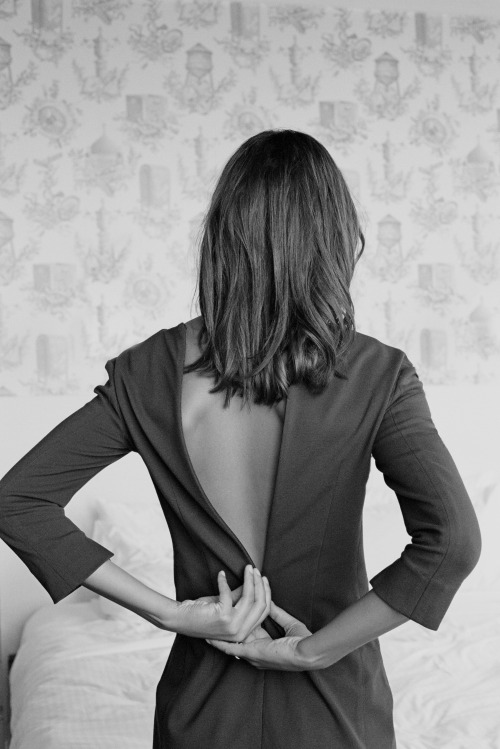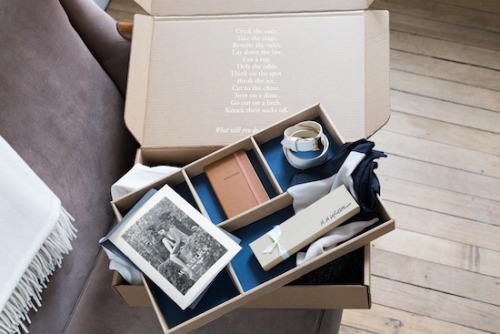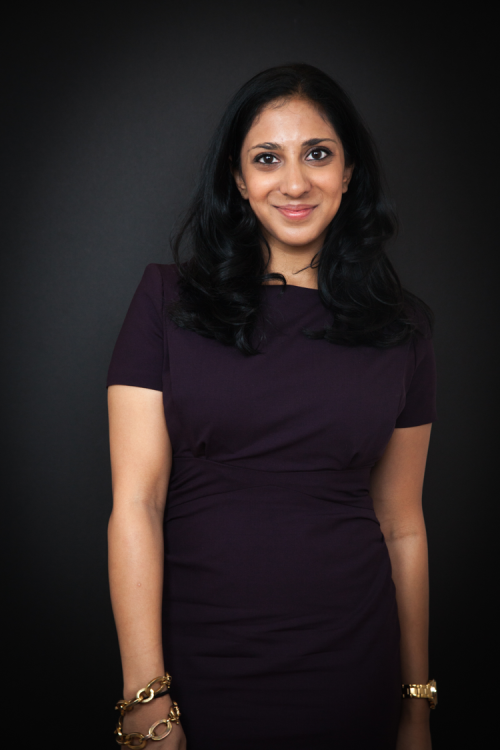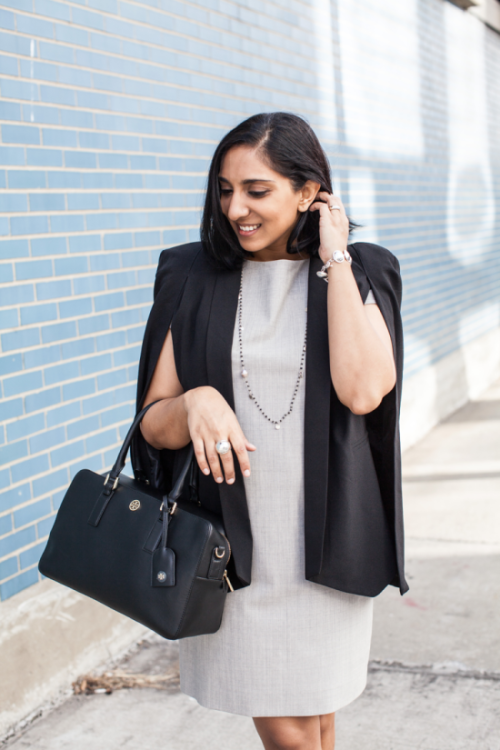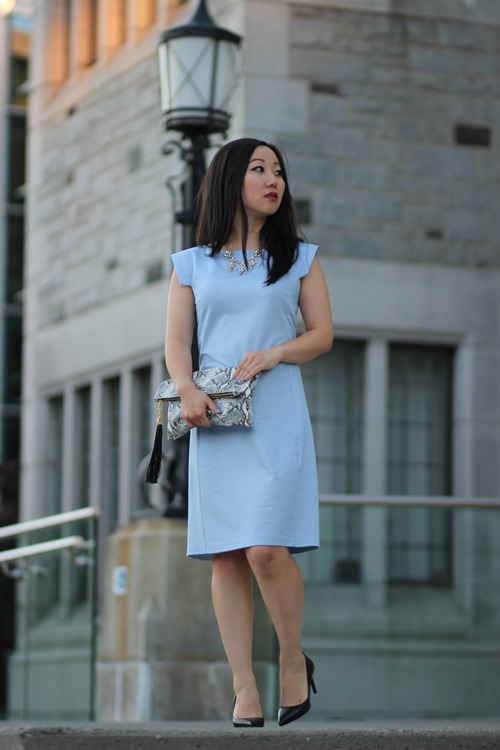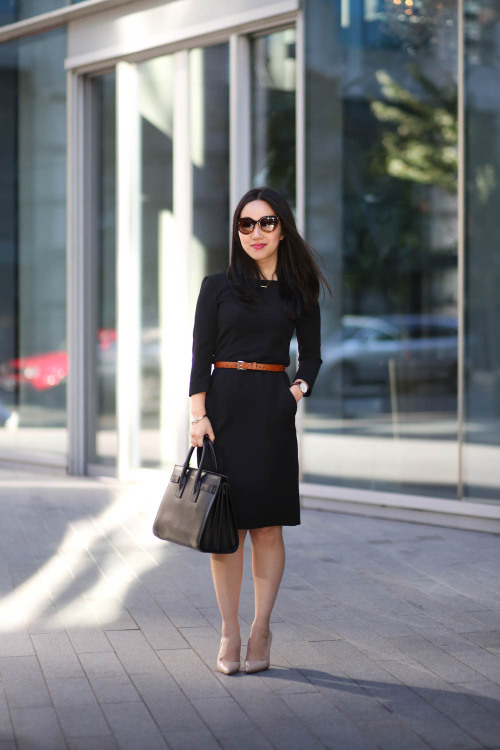MM.LaFleur: For perfectionists who sometimes spill on their clothes Imagine: you are walking through
MM.LaFleur: For perfectionists who sometimes spill on their clothes Imagine: you are walking through Chicago’s O'Hare International Airport when a fellow female traveller stops you to ask where your dress is from. She whips out her smartphone and purchases it there and then. This is the kind of thing that happens when Hitha Palepu, a Vice President of Business Development in the pharmaceutical industry and founder of travel blog Hitha on the Go, wears one of her many MM.LaFleur dresses. Over email, Palepu tells me she “discovered MM.LaFleur in fall 2012 through a PureWow newsletter and immediately fell for the brand: the design and technology of their dresses, the brand itself and the fact that I didn’t have to sacrifice style for comfort or conservative dress codes”. It suited her often-in-the-air, often-in-high-power-meetings career, which is exactly what MM.LaFleur CEO and co-founder Sarah Miyazawa LaFleur aimed for when she launched the business after years working in consulting and managing luxury portfolios in private equity. Miyazawa LaFleur credits her corporate experience for both training her for entrepreneurship and for giving her the idea to start MM.LaFleur. Like so many professional women, she spent those years struggling to find stylish, practical and work-appropriate clothes that respected her lifestyle as much as her work commitments. Creating the perfect dress The daughter of a woman working in high fashion, Miyazawa LaFleur eventually decided to create her own brand aimed at women with corporate careers. She wanted to offer boardroom-worthy clothes that would withstand the test of time, without a four-figure price tag. The MM.LaFleur dresses are often compared to Victoria Beckham’s recognisable brand, but retail between $150 and $360. Having never been to fashion school, Miyazawa LaFleur hired Miyako Nakamura, former head designer at Zac Posen who had also worked for Jason Wu and Theory, as creative director. Her first task was to create presentation-perfect dresses. MM.LaFleur tackled dresses first because, as Miyazawa LaFleur tells me over Skype, they are “easier to wear, easier to put on in the morning”. A fan of dresses herself; Miyazawa LaFleur believes many women enjoy buying dresses more than any garment because of the emotional aspect of it. Since then, the company has expanded into separates and accessories, all selected, sourced and crafted with the same care and thoughtfulness. The model is highly scalable as one could imagine shoes or bags being part of the offering in the future. When I shared my fear of laddered tights with Miyazawa LaFleur, she tells me the company has found the holy grail: tights that don’t rip. Like most of the MM.LaFleur range, the Commando tights are made in the US. Producing locally, often in New York City, started as a practical way to exert control over the supply chain but turned out to be an additional selling point, as “customers love it”. Initially, Miyazawa LaFleur had some samples made in China, but quickly gave up as “they weren’t up to spec”. The company has “now built a community in the garment district. Nakamura found most suppliers through her contacts in the industry”. For instance, its Greenwich Avenue belt supplier is father-son duo Mike and Ush who work with the finest Italian leather. For the Bird of Fortune silk and modal scarf, MM.LaFleur collaborated with artist Mark Wagner who deconstructed dollar bills into a peacock, a tongue-in-cheek accessory for professional women. Introducing: the Bento box The MM.LaFleur selection really comes together on its website, the transactional heart of the brand. This autumn, MM.LaFleur launched a Bento box concept. Ever mindful of its customers’ business, the company sends them a selection of products, picked based on a quick-to-complete online questionnaire. You receive the box at home and have four days to try on the outfits. Miyazawa LaFleur describes the concept as “a big bet” but says “the response has been phenomenal”. Having received a box myself, I understand why. The surprise of not knowing what has been picked for you, combined with the possibility of trying on in the safety on your own home, with beloved accessories on hand, is a feel-good experience. The box creates an intimate link between the customer and the brand as you know someone has read through your answers, bothered to get an understanding of what you want and thoughtfully packed it. Opening the box, untying the pouch of the blue Ostrich Greenwich Avenue belt or opening the sleeve in which the dresses are preserved was an early Christmas. I was sold on the Lydia 3.0 when a friend I was Whatsapping pictures to commented: “Black looks hot! Smoking”. The compliments kept coming the following day at work when I paired the Sant Ambroeus jacket cardigan with J Brand skinny jeans and Petit Bateau stripes, and the day after when I wore the full-skirted deep sea Toi under my trusted grey squirrel-printed Kookai jumper. When I interviewed them, Palepu had promised me the dresses made her feel “powerful and unstoppable”, echoed by Jenny Liu, a program manager in the utilities industry, who wrote they made her feel “professional, confident, and feminine”. Wearing them, I understood why. As important as the compliments, especially for a brand relying on ecommerce, the dresses fitted perfectly. Nakamura fits every single dress or separate on no less than six dummies, making sure that they are flattering for any female body shape. On the site, you can shop by body type, including petite-friendly and full-hips-friendly. Few fashion designers go that far in respecting the female form. Not many are known for their mastership of workwear either. According to Miyazawa LaFleur, this is because “they don’t have a lot of friends in professional environments, all their friends are creative people who express themselves through clothes. For the MM.LaFleur customer however, fashion is not a main concern, it’s a way to get through the day comfortable”. It’s also a way to get through the night comfortable. Says Liu, who collaborated with the brand to create the Jenny dress: “I love that their dresses are appropriate for my conservative office but are also perfectly suitable for going out afterwards for a nice dinner with girlfriends or date night with my boyfriend. My philosophy is that clothing should enhance, and not distract, and I feel that MM.Lafleur clothing does just that.” Carol Chuang, HR professional and stylist for Keaton Row has also “learned to style them with my own twist so they can also be worn a bit more casually at the weekend”. The MM.LaFleur range has an all-round way of fitting into the consumer’s life. Palepu explains: “My arsenal of MM LaFleur are what I reach for when I have a meeting, a big presentation, or a business trip. I’ve been wearing the Clara, the Rachel, and the Eliza through my pregnancy and during trips - the fabrics are wrinkle resistant and the styles are both flattering and comfortable.” Ensuring easiness of care is integral to the MM.LaFleur philosophy. Each item comes with details instructions on the site so the wearer knows how much time and money caring for her garment will take. At trade shows, Nakamura picks fabrics that are easy to care for. Machine-washable ones are favoured, as are the ones that don’t wrinkle. MM.LaFleur’s thoughtfulness extends beyond the fabric. The Lydia 3.0 includes a snap in its twisted short sleeves to keep bra straps in place. Most dresses are lined, limiting the risk of visible panty line or see through-ness. A resource for professional women But MM.LaFleur doesn’t just provide its customers with great clothes. The company also has a strong content side. For Miyazawa LaFleur, “content is how we stay authentic. We want to be a resource for professional women and show them they can trust us as we understand them”. Sure enough, the MM.LaFleur’s blog The Ampersand includes profiles of women including Dot Complicated founder and former Facebook marketing director Randi Zuckerberg, style features on how bloggers wear their MM.LaFleur dresses and an ode to Emma Watson’s UN speech. The concept has been expanded to real-life iterations, including a series of salons in 2013 where experts came to talk about how they got their break in their industry. Reflecting the diversity of the founding team (Miyazawa LaFleur and Nakamura are Japanese or of Japanese descent, COO and co-founder Narie Foster is of Thai descent), there are many women of colour interviewed on the blog, something too rare in fashion. Miyazawa LaFleur reckons the brand’s success with non-white customers is because of the colours Nakamura picks. She likes “undetermined colours, the kind that make you wonder if the fabric is purple or grey”, Miyazawa LaFleur describes, remembering that she used to struggle with wearing J.Crew clothes for instance as none of them suited her. This is all part of the company’s unique identity, which shine through its copy. The tags attached to the garments remind customers that “luck favours the brave” or to “live with purpose, dress with ease”. The attention to details goes down to the care label, which suggests that “sometimes we all need a gentle scrub down”. Having spent two weeks researching MM.LaFleur, speaking to the company’s clients and Miyazawa LaFleur, reading its blog and wearing its clothes, the words that best sum up the company are found in the website’s introduction to its management team: “We’re perfectionists who sometimes spill on our clothes. Can you relate?” A Bento box was sent to me free of charge by MM.LaFleur Photos 1,2,3,4,7, and 10 courtesy of MM.LaFleur; photos 5 and 6 courtesy of Hitha Palepu’s Hitha on the Go; Photos 8 and 9 courtesy of Jenny Liu’s Stuff I Love -- source link
#womenswear#start up
